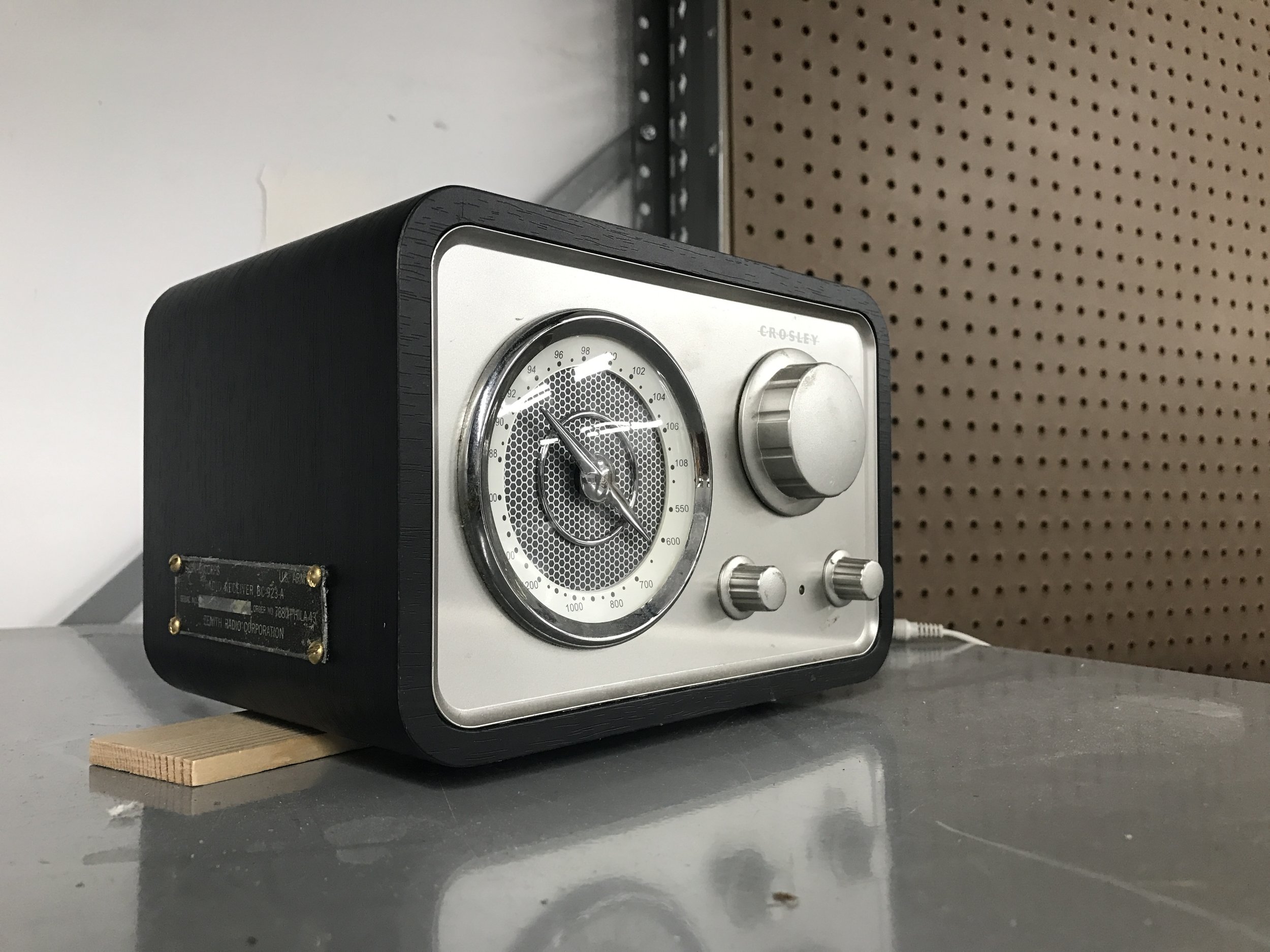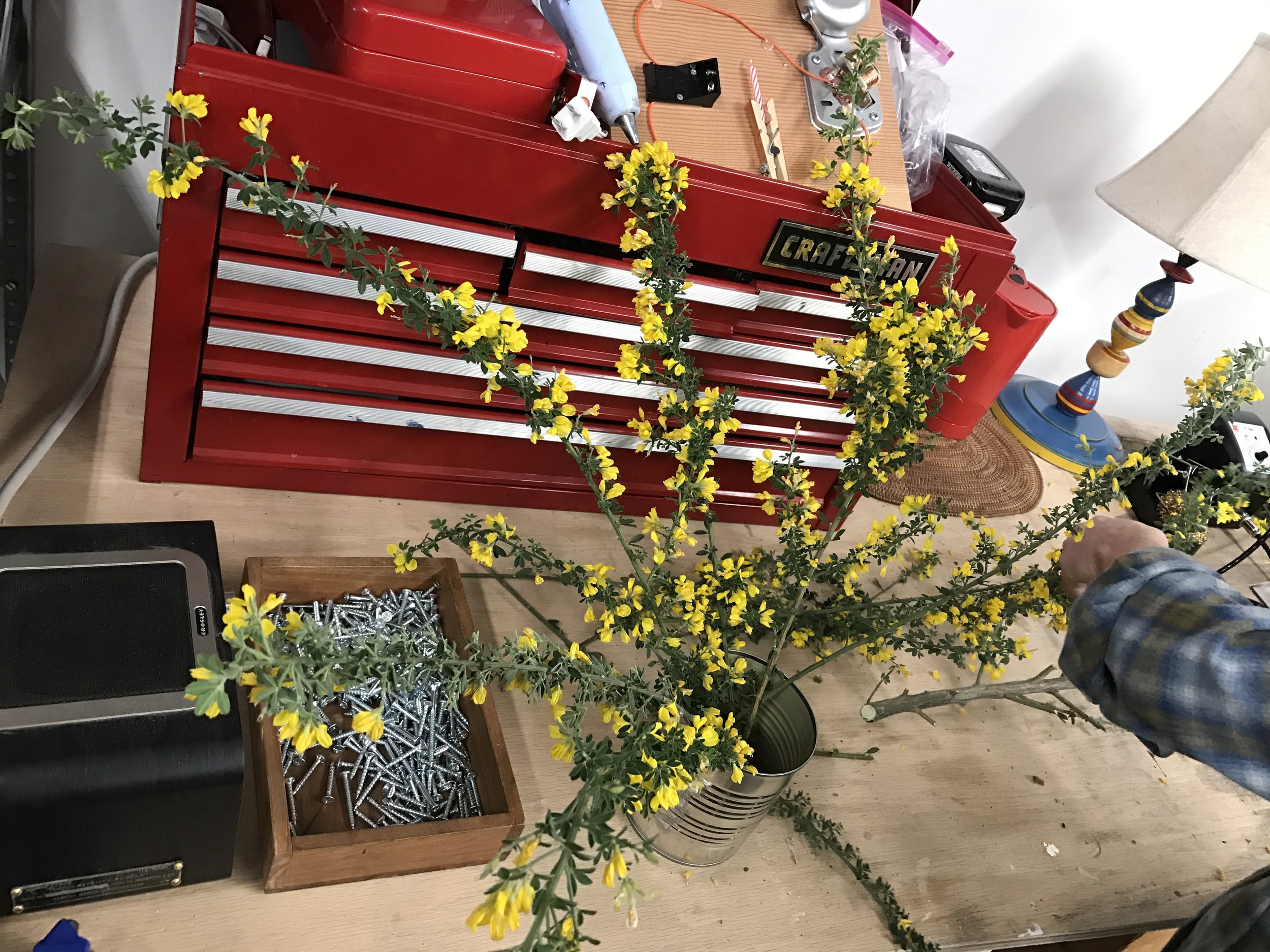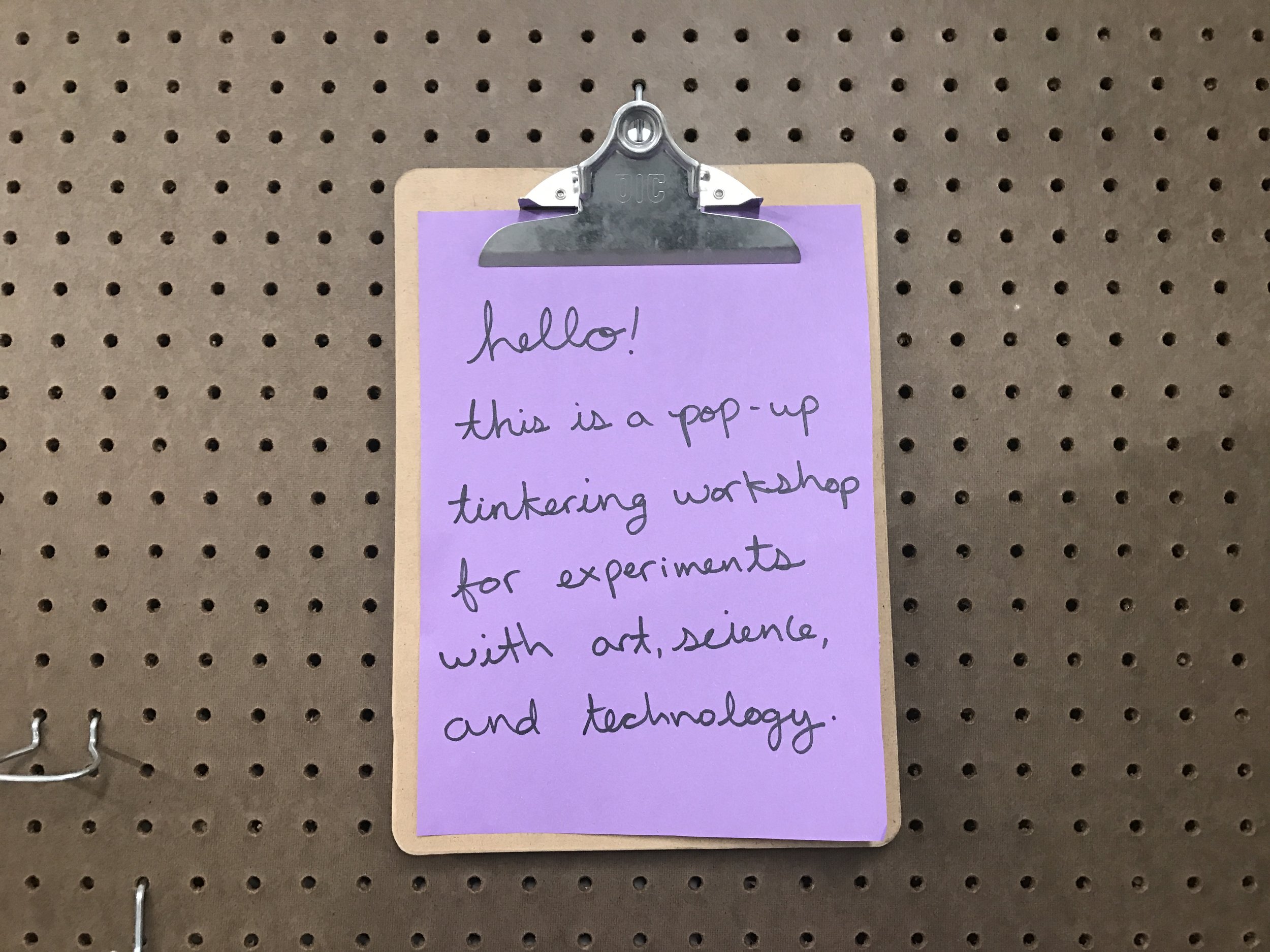Tinkering Residency at Chabot
For the past week, we’ve been in residency at Chabot Space and Science Center. We’ll be here for about a month with the goals of setting up a pop-up tinkering workshop, experimenting with crafting with code activities, and learning alongside visitors and staff.
When we arrived last Tuesday, we were introduced to our space for the residency, a loading dock/multi-use room right off the museum floor that we hoped to turn into a functional workshop with tools and materials for prototyping activities.
We cleared out a bunch of stuff and started to set up the shop. After making some room for tools and materials, we built a peg board wall behind the workbench and set up shelves for materials and examples.
For a few creature comforts in the space, we added speakers for music and arranged some flowers that Nicole found outside. We added a little sign with a brief explanation of who we are and the plan for our residency. We added more functional and inspirational elements over the next couple of days and the environment started to take shape!
Over the course of our time at Chabot, we'll investigate different aspects of crafting with code. The idea is to look at traditional tools and art making techniques through digital and analog means.
For the first set of explorations, we’re revisiting the venerable scribbling machines from a few new angles. The first way we’ve been remixing the activity is by changing up the drawing tools. While crayola markers are an approachable and friendly way to make marks when the devices vibrate across the paper, we’ve been interested in trying more expressive mediums.
Nicole brought a bunch of fluorescent paint which opens up possibilities of using brushes, q-tips, toothbrush heads, make-up applicators and other materials as mark making tools.
Since next First Friday event at Chabot is bug themed, we thought we’d look at the paintings under the blacklight for a UV effect (bugs use UV right?) with spectacular results! Another thing that we’ve been inspired to try from some of our favorite tinkering tweeters is attaching LEDs for unpredictable light paintings, reminiscent of the paths of fireflies.
We’ve also been collecting a wide variety of slow moving motors for chain reactions and we’ve been inspired to use them to create some more intricate drawing machines.
Building on some of the investigations that we tried with the LEGO foundation team last year that used technic pieces to create machines that move in different ways than just an offset motor. We’re hoping that with a slower, geared down motor, we can try some more deliberate designs.
It adds a extra level of challenge to try to make machines that use linkages or complicated mechanisms, but we think this goes a little more toward the idea of ‘physical programming’ and systematic thinking that’s the backbone of computational tinkering.
For an even more direct link to programming, we’ve been using digital tools in new ways and combining the results with analog art machines. We started playing around with a vinyl cutter and cut out ‘stencil’ material with a beetleblocks design. We tried out letting an art machine draw over the stencil, leaving an outline of its path. There's still more experimentation needed, but I like the idea of using a digital tool to make something useful and reuseable.
For another way to explore analog/digital connections, we’ve been thinking about the relationship between making geometric shapes on the computer with beetle blocks and crafting them in the real world using string and nails.
As we develop activities around coding and computational thinking, making connections to traditional tools and techniques can be a way to introduce the topics to a wider group of learners. Creating string art is very similar to 3D printing, especially when combined with a programmatic way of creating the design. Nicole took it one step further by coating the string art with wallpaper paste to hopefully make a stiffer shape that is even more like a 3D printed object.
Just like how we've approached other STEM topics by creating a variety of low threshold entry points, we think that programming activities should support multiple pathways based on prior interests and engaging open-ended prompts.
It will be fun to experiment a bit ourselves and then share our half baked prototypes with staff and visitors to Chabot over the next month in our evolving tinkering workshop space.
















